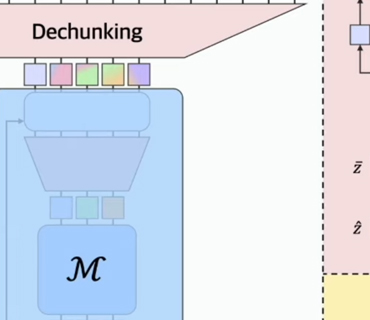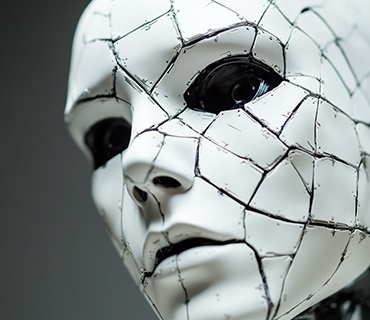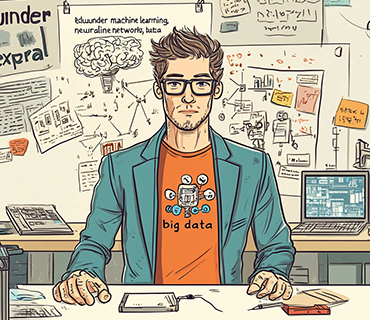Articles

Let the Era of the Digital Human Begin!
Introduction
In recent years, we have witnessed a radical change in the world of marketing and advertising with the emergence and consolidation of influencers. These figures, who started as regular social media users, have managed to build massive audiences and become spokespersons for brands of all kinds. However, the landscape is shifting once again, and technology is at the forefront of this transformation.
Today, we find ourselves on the threshold of a new era where influencers are no longer necessarily human beings, but rather digital creations designed and programmed to act like real people. These "digital humans," powered by artificial intelligence and advanced 3D modeling technologies, are beginning to play a significant role in marketing, challenging our traditional perceptions of authenticity, influence, and human interaction.
In this article, I want to explore how the emergence of these digital influencers is redefining marketing and advertising and what it means for the future of the relationship between brands and consumers. Through a detailed analysis, I want to discuss both the opportunities this innovation offers and the ethical and legal risks it poses. The arrival of digital humans represents not only a technological advance but also a profound cultural shift that deserves very careful consideration.
So, let the era of the digital human begin! A future where the line between real and virtual blurs, opening a world of possibilities but also challenges that we are just beginning to understand.
The Rise of Digital Influencers
The emergence of digital influencers represents a significant evolution in the modern marketing landscape. These virtual characters, created and managed through advanced technology, are transforming the way brands connect with their audiences, offering new opportunities and posing interesting challenges.
Evolution of Influencer Marketing: From Human to Digital
Influencer marketing has experienced exponential growth over the past decade. Initially, brands collaborated with public figures and celebrities to promote their products and services. With the rise of social media, a new generation of influencers emerged: ordinary people who, through authentic and relevant content, managed to build loyal and engaged communities.
This evolution has paved the way for the next stage: digital influencers. These virtual entities are designed to emulate real people, with their own personalities, styles, and narratives. Unlike human influencers, digital influencers offer brands complete control over the identity and message conveyed, eliminating unpredictable variables associated with human behavior.
The transition from human to digital influencers is driven by several key trends, including technological advances in artificial intelligence and animation, as well as the growing demand for innovative and personalized content. Additionally, Generation Z and millennials, who are accustomed to interacting in digital environments, show high receptivity to these new types of influencers.
Success Stories: Examples of Popular Digital Influencers
Several digital influencers have achieved levels of fame and success comparable to, and even surpassing, their human counterparts. Some notable examples include:
- Lil Miquela: Created in 2016, Lil Miquela is a virtual influencer with millions of followers on Instagram. Presented as a 19-year-old model and musician from Los Angeles, she has collaborated with luxury brands such as Prada and Calvin Klein and has been recognized for addressing social issues such as racism and LGBTQ+ rights in her content. She currently has over 2.5 million followers on Instagram with 1,338 posts.
- Shudu Gram: Considered the world’s first digital supermodel, Shudu was created by photographer Cameron-James Wilson. Her realistic and elegant appearance has captured the attention of the fashion industry, leading her to collaborate with brands such as Balmain and Rihanna's Fenty Beauty. She currently has 239,000 followers on Instagram with only 159 posts.
- Imma: Originating from Japan, Imma is a virtual influencer known for her avant-garde style and presence in the Asian fashion scene. She has appeared in numerous advertising campaigns and magazines, further blurring the line between real and virtual. With only 811 posts, she already has 389,000 followers.
The Technology behind Digital Influencers
The creation and management of digital influencers is made possible by a combination of advanced technologies, including:
- 3D modeling and animation: Using 3D design software, creators can build virtual characters with a high degree of realism and detail. Animation allows these characters to have natural movements and facial expressions, increasing their credibility and emotional connection.
- Artificial intelligence: AI plays a crucial role in automating and personalizing the interactions of digital influencers. Through machine learning algorithms, these characters can analyze audience data, tailor their content to specific preferences, and respond coherently in real-time. Not to mention the potential that generative AI brings in terms of the physical design of these digital influencers.
- Real-time rendering: Technologies like game engines allow digital influencers to be rendered efficiently and quickly, facilitating the production of high-quality content with greater frequency and versatility.
- Deepfakes and voice synthesis techniques: These technologies allow for the recreation of human voices and facial expressions with great precision, adding additional layers of realism to digital characters. Although controversial, when used ethically, they can enrich the user experience and the effectiveness of marketing.
The synergy of these technologies allows for the creation of digital characters that not only look real but can also interact and evolve in ways similar to humans. This opens many doors thanks to AI, and the future where these digital influencers can interact with us in real-time through machine learning models and AI systems is not far off. This technological advance opens a wide spectrum of creative possibilities for brands but also raises important questions about authenticity, ethics, and the future of human interaction in the digital realm.
Advantages for Businesses
The adoption of digital influencers in marketing strategies presents a number of significant advantages for businesses. These "digital humans" not only offer new opportunities for creativity and campaign personalization but also allow for greater control and efficiency in the execution of marketing strategies.
Total Control over the Image
One of the most notable advantages of using digital influencers is the total control that companies can exercise over the image and message of these characters. Unlike human influencers, who have their own personalities, opinions, and personal lives, digital influencers are creations that can be adjusted and perfected to perfectly align with the brand’s identity.
- Custom design: Companies can create a digital influencer from scratch, defining every aspect of their appearance, from skin color to clothing style, ensuring that they reflect the brand’s values and aesthetics exactly.
- Message consistency: With a digital influencer, there is no risk of the promotional message being compromised by the influencer’s personal actions or statements. Consistency in communication is maintained, which is crucial to maintaining the brand’s credibility and identity over time. Here, and this is my sincere opinion, not only as an AI expert but also as a person and customer, this is where the biggest problem regarding sincerity and ethics on the part of companies will arise.
- Quick adaptation: If trends change or the brand decides to reposition itself, the digital influencer can be updated or redesigned quickly and without the challenges associated with working with human influencers, such as contract changes or conflicts of interest.
Availability and Flexibility
Another great advantage of digital influencers is their ability to be available and operational at any time and place, 24/7, offering unparalleled flexibility in planning and executing marketing campaigns.
- 24/7 operation: Digital influencers don’t need rest, vacations, or have time limitations. They can participate in campaigns and virtual events at any time of the day, catering to global audiences in different time zones without issues.
- Multichannel interaction: These characters can interact simultaneously on multiple digital platforms, from social media to mobile apps, allowing an omnichannel presence that maximizes the campaign's reach, offering tremendous possibilities to brands.
- Global scalability: Digital influencers are not limited by geographical or cultural barriers. They can be adapted to resonate with audiences in different global markets, with the possibility of customizing their language, style, and content according to the region.
Long-Term Costs
While the initial creation of a digital influencer may involve a significant investment in technology and development, long-term costs tend to be lower compared to maintaining relationships with human influencers. This goes hand in hand with the evolution and availability of technology.
- Elimination of recurring costs: There’s no need to negotiate ongoing fees, travel expenses, or deal with contract renewals, as is the case with human influencers. Once created, a digital influencer can be used indefinitely, with minimal costs for updates or modifications. As I always say: “Once it’s done, it’s done!”
- Efficient content production: Companies can produce large volumes of content in less time since digital influencers do not require physical sets, lighting, or multiple takes to achieve the desired content. Everything can be generated and adjusted in a controlled digital environment. Basically, all you need is a computer.
- Longevity of the influencer: Unlike human influencers, who may lose relevance or change careers, digital influencers can stay in the market indefinitely, always fresh and aligned with current trends.
Innovation and Creativity Without Limits
Creating a digital influencer opens up a world of creative possibilities that are simply not feasible with human influencers. Brands can explore innovative concepts and narratives that challenge traditional conventions.
- Fantastic narratives and alternative futures: Digital influencers can inhabit worlds of science fiction, fantasy, or alternative futures, creating content that captures the imagination and curiosity of the audience in ways that human influencers cannot. Imagine an influencer living in the world of Star Trek, or in The Lord of the Rings, or even your favorite anime. This would mean millions for brands.
- Experimentation with new technologies: By integrating technologies like augmented reality (AR) or virtual reality (VR), digital influencers can offer immersive experiences that actively engage consumers in the brand’s story. This already foreshadows the future that awaits us, similar to the 2018 movie Ready Player One starring Tye Sheridan.
- Personalized real-time interaction: With AI support and hardware power, digital influencers can interact with each consumer personally, offering responses and recommendations tailored to individual preferences, increasing campaign effectiveness.
Avoiding Risks associated with Human Influencers
Digital influencers allow companies to mitigate various risks commonly associated with working with human influencers.
- Minimizing scandals and controversies: Companies can avoid the possibility of a human influencer getting involved in a scandal or making comments or actions that could damage the brand’s reputation. Digital influencers always act according to the values and pre-scripted guidelines set by the brand.
- Stability and predictability: Digital influencers don’t change their minds, renegotiate contracts, or are affected by personal or health issues. This ensures a stable and predictable relationship between the influencer and the brand.
Risks and Ethical Challenges
While digital influencers offer numerous advantages for businesses, they also present a number of risks and ethical challenges that cannot be ignored. These challenges raise important questions about transparency, authenticity, and responsibility in marketing, and how brands should address these issues to maintain consumer trust and meet ethical standards.
Deceptiveness and Transparency
One of the main risks associated with the use of digital influencers is the possibility that consumers may be misled. The line between real and virtual becomes blurred when a digital influencer is presented as a real person, leading consumers to trust a figure that has no physical existence or real human experiences, nor has personally tried or tested the products being sold to us.
- Questioned authenticity: Consumers value authenticity in influencers and may feel deceived upon discovering that a person they follow is not real. This could erode trust not only in the influencer but also in the brand that uses them. Should companies be required to disclose whether the influencer in the campaign is real or digital? Do we need to update our laws in this regard?
- Insufficient disclosure: It is crucial that brands are transparent about the digital nature of these influencers. Lack of clear disclosure can be seen as deceptive and manipulative, damaging the brand’s reputation and generating distrust among consumers.
- Unrealistic expectations: Digital influencers, not being limited by the realities of the human body, may promote unattainable beauty and life standards, perpetuating unhealthy or unattainable ideals for the public. Something we’ve seen over the last, possibly, 100 years regarding aesthetics, which has had a huge moral and psychological impact on our society.
Legal Responsibility
The use of digital influencers also raises complex questions about legal responsibility. Since these characters are not real people, assigning responsibility in cases of misleading or harmful advertising becomes more complicated.
- Dissemination of false or misleading information: If a digital influencer promotes a product in a misleading or incorrect way, who is responsible? The company that created the character, the brand that employs them, or both? Establishing the chain of responsibility is a challenge that still needs to be clearly defined by regulations.
- Consumer protection: Current consumer protection laws may not be fully equipped to address situations where a digital influencer is the one who misleads. Regulations must adapt to ensure that consumers are protected, regardless of whether the message comes from a human or a digital character.
- Image rights and intellectual property: As digital influencers become more complex and popular, disputes over intellectual property could arise, especially if different brands or creators claim rights over the design, voice, or personality of a digital influencer. See the case “Scarlett Johansson vs. OpenAI”. In this case, from my perspective as an audio expert, having worked 14 years of my life with audio, editing, production, etc., it wasn’t Scarlett’s voice, nor did it resemble it in the slightest. Simply some factors like messages, tweets, etc., led to this situation. Personally, it was my favorite ChatGPT voice, and unfortunately, they ended up removing it, even though it didn’t even sound like Scarlett.
Impact on Credibility
The use of digital influencers can affect the credibility of marketing campaigns and the brands themselves if not handled carefully. Although these characters can be attractive and effective, there is a risk that consumers will perceive the campaign as less genuine or disconnected from reality.
- Perception of dehumanization: Some consumers may perceive the use of digital influencers as a dehumanization of marketing, where personal and emotional connection is replaced by a purely commercial and programmed interaction. This could reduce the effectiveness of the campaign and generate rejection towards the brand. This aspect reminds me a lot of Japanese society, where there is a significant issue with personal relationships. There are many documentaries about this, and culturally speaking, although it is sad, it’s interesting to see how some societies reach such a point.
- Questioning sincerity: Consumers may doubt the sincerity of a digital influencer, knowing that every word and action is scripted and controlled by the brand. This could lead to less emotional resonance and, therefore, less real influence on purchasing decisions. I am of the opinion that humans are so naive and ignorant, in general, that they would buy anything that is sold to them...
Impact on Social and Cultural Standards
The introduction of digital influencers into the market can also have broader consequences on society, especially in terms of how social and cultural standards are perceived.
- Standardization of beauty and fashion: Digital influencers, being designed to meet certain beauty ideals, may contribute to the standardization of what is considered "beautiful" or "fashionable." This can limit diversity and promote unrealistic expectations among the public, particularly the young and vulnerable, which can push and foster a more depressive society, among other social problems.
- Influence on self-esteem: By presenting perfect and flawless characters, digital influencers can negatively impact the self-esteem of followers, who may feel inadequate or insufficient when comparing themselves to these unattainable ideals.
- Redefining reality: As digital influencers become more common, there may be a shift in how people define reality and authenticity, which could have long-term effects on social interactions and the way human relationships are built and perceived. This will undoubtedly have a very serious impact on our society, something that today already has enough problems in this regard.
Possible Reactions and Responses from the Public
The public could have various reactions to the proliferation of digital influencers, ranging from acceptance and enthusiasm to rejection and criticism. It is important for brands to be prepared to manage these reactions and adjust their strategies accordingly.
- Acceptance by younger audiences: Younger generations, such as millennials and Generation Z, who have grown up in a digital environment, may be more receptive to digital influencers. However, this acceptance may not be universal, and brands should be mindful of generational differences in the perception of these characters.
- Resistance or public criticism: There could be resistance from those who see digital influencers as a threat to authenticity and genuine human interactions. Criticism could focus on the lack of real connection, superficiality, or the manipulative use of technology.
- Ethical and regulatory debate: As digital influencers become more prominent, I am very sure that ethical and regulatory debates about their use in advertising will emerge. These debates could influence how brands use these tools and the regulations that guide their application.
Impact on the Public and Culture
The arrival of digital influencers has not only transformed marketing but is also having a significant impact on culture and public perception. As these virtual characters gain popularity, they influence how people view reality, authenticity, and social standards. Let’s look at the various ways digital influencers are affecting the public and culture, from consumer perception to psychological and social implications.
Consumer Perception
As we have seen, digital influencers are altering the way consumers perceive authenticity and reality in the content they consume. As virtual characters become more realistic and omnipresent, consumers may face challenges in distinguishing between what is genuine and what is fabricated. We are now living the change, the implementation of these characters and technologies in our lives and society. These digital influencers are going to become increasingly real, and very, very soon, we will have them everywhere. It’s economically inevitable!
- Ambiguity between real and virtual: Advances in technology have made digital influencers increasingly indistinguishable from real humans. Although they are not yet perfect, companies like The Clueless have developed projects that are very successful with digital influencers like Aitana Lopez on Instagram, who already has 325,000 followers with 135 posts (@fit_aitana), which can lead to confusion about the authenticity of the content. This could make consumers more cautious or skeptical of what they see on digital platforms. In this regard, I believe that human naivety and our fondness for turning new things into trends will be the trigger for our own problems. Responsible consumption would be appropriate, but there is no natural force or human law that can stop humans.
- Trust in the source: Trust in the source is fundamental for influencer marketing. If consumers discover that an influencer they considered real is actually a digital creation, their trust could be eroded, not only in that influencer but also in the associated brand. In the case of The Clueless with Aitana, it was so viral in Spain that it didn’t lead to major problems; however, The Clueless has the following text as a description of their influencer:
“Aitana Lopez is a strong and determined woman, independent in her actions and generous in her willingness to help others. With boldness and authenticity, she faces challenges and expresses her opinion without reservation, although her complicated humor and self-centeredness sometimes make it difficult to get a smile out of her, showing her complexity. As a content creator, she shines with extroversion, attracting attention with her striking character. As a passionate Scorpio, she highlights her love for video games and her dedication to the fitness lifestyle, evidencing her intensity and care for her physical well-being."
Now judge for yourself whether I’m right or not…
- Public adaptation: Although some consumers may react negatively to the idea of being influenced by a fictional character, others, especially younger generations who have grown up in digital environments, may be more open and receptive to interacting with digital influencers. This is basically due to lack of experience and therefore lack of knowledge.
We must not forget our past, as it is what has brought us here! It’s not the time to screw it up!
Change in Beauty and Reality Standards
As I have mentioned in previous points, digital influencers, being designed without human limitations, can promote beauty ideals and lifestyle standards that are unattainable for real people. This can have a profound effect on how the public perceives beauty, fashion, and lifestyle. Something that is not new to us, but this new wave, I believe, could plunge our society into a black hole worldwide.
- Standardization of beauty: Digital influencers can be designed to represent a specific beauty ideal, which is often more perfect and stylized than is humanly possible. This could lead to further standardization of what is considered attractive, diminishing the appreciation for diversity and natural beauty.
- Social pressure: Constant exposure to perfect digital influencers can increase social pressure, especially among young people, to meet impossible standards. This could contribute to issues of self-esteem, anxiety, and body image-related disorders. And here I repeat, this is not new to us; therefore, at this point, we should know how to deal with it and combat it.
- Normalization of the unreal: As digital influencers become part of the social fabric, there is a risk that the unreal becomes normalized, altering people’s expectations of what is possible or desirable in real life.
Psychological Implications
I want to emphasize that the impact of digital influencers is not limited to cultural perception; it also has psychological implications for consumers. Interaction with characters that are not real but appear to be can affect how people relate to their environment and themselves. I think it’s vitally important that we take this aspect very seriously. Young people don’t have the experience we have; let’s not let them discover it on their own!
- Disconnection from reality: Frequent interaction with digital influencers can lead to a disconnection from reality, where people begin to value virtual interactions more than real ones. This could affect interpersonal relationships and mental health, creating a greater sense of loneliness or alienation.
- Identification and projection: People tend to identify with the influencers they follow. In the case of digital influencers, this identification can be problematic if followers project human qualities onto a virtual being, which could distort their perception of reality.
- Development of empathy: Empathy is a fundamental skill in human relationships, and its development is based on interaction with other real people. The prevalence of digital influencers could affect the development of empathy, especially among young people who are in a critical stage of social and emotional formation. As AI systems improve in this regard, we see incredible but very dangerous interactions.
Influence on Consumer Culture
Digital influencers are not only changing the way consumers interact with brands but are also influencing consumer culture in general. Their presence is redefining the norms of how and why we buy and what we value in products and brands.
- Change in the brand-consumer relationship: Digital influencers allow brands to create a more controlled and consistent relationship with consumers. However, this relationship may lack the authenticity and spontaneity that comes with human influencers, which could change the dynamics of how consumers perceive and value brands.
- Image-based consumption: As digital influencers, who are designed to be visually appealing, gain popularity, there could be an increase in consumption based purely on image and aesthetics, with less emphasis on quality, functionality, or the values behind the products.
- Consumerism and sustainability: The creation and promotion of unattainable life ideals by digital influencers can foster an unsustainable cycle of consumerism, where consumers constantly seek new products to get closer to an impossible ideal, which could have negative consequences for environmental and social sustainability.
When one thinks about it carefully, we see how the previous points directly relate to these last ones, and everything is a chain of events that can result in a very dangerous snowball for our society.
Redefining Identity and Authenticity
Digital influencers are contributing to a redefinition of what it means to be authentic in the digital age. Identity, traditionally associated with physical reality, is expanding to include characters and figures that exist solely in the virtual world.
- Digital identities: Consumers, especially young people, may begin to see their digital identities as an extension or even an improvement of their real identities. This could lead to greater investment in virtual life, to the detriment of real-life experiences. Here again, I refer you to Ready Player One.
- Authenticity in the digital world: Authenticity, which has historically been tied to truth and personal experience, is being redefined in the digital context. Digital influencers can be perceived as authentic in their ability to represent certain ideas or lifestyles, even though they are not real in the traditional sense.
- Culture of curation: Authenticity may be seen as the ability to curate and present an ideal image or lifestyle rather than the representation of real life with all its imperfections. This could lead to a culture where aesthetic perfection is valued over truth and human experience.
The Future of Marketing with Digital Influencers
The future of marketing with digital influencers looks like a field full of possibilities and challenges. As technology continues to advance, digital influencers are set to play an increasingly prominent role in global marketing strategies. I also want to explore growth projections, technological innovations that could shape this future, and how ethical marketing might evolve in response to these changes. I like to be objective and critical, not negative. We must look at everything from all perspectives; let’s not be ignorant to the extreme!
Growth Predictions
The use of digital influencers is booming, and this trend is expected to continue accelerating in the coming years. I personally believe that by 2025, we will see them everywhere. As brands look for more innovative and controlled ways to interact with their audiences, digital influencers are becoming an attractive and efficient, and very economical option.
- Expansion into various sectors: Although digital influencers have gained traction primarily in fashion and beauty, their use is expected to expand to other sectors, such as technology, entertainment, education, and tourism. These virtual characters can be adapted for different contexts and audiences, increasing their versatility and reach.
- Widespread adoption by major brands: Major brands that are already exploring the use of digital influencers will likely intensify their efforts, and those that have not yet done so may join this trend to stay competitive. Adoption by global brands will further legitimize the role of digital influencers in marketing.
- Growth of independent digital influencers: Like human influencers, independent digital influencers created by small studios or even individuals could emerge, gaining popularity for their authenticity and unique approach. This would democratize access to this technology and allow for greater diversity of voices and styles in the digital world.
Future Technological Innovations
The future of digital influencers will be driven by technological advances that will make these characters more realistic, interactive, and personalized. These innovations will not only improve the quality and effectiveness of marketing campaigns but also open up new creative possibilities.
- Advanced artificial intelligence: AI will continue to be the engine behind digital influencers, with increasingly sophisticated algorithms allowing these characters to learn and adapt to individual consumer preferences. This could include the ability to have natural conversations, understand human emotions, and offer personalized recommendations in real-time.
- Augmented Reality (AR) and Virtual Reality (VR): The integration of AR and VR will allow digital influencers to interact more immersively with consumers. For example, a digital influencer could appear in a consumer’s living room through AR or guide users through completely virtual brand experiences in VR.
- Deepfakes and realistic voice synthesis: Although deepfakes have been controversial, their ethical use could enhance the authenticity of digital influencers. Realistic voice synthesis will allow these characters to speak with a naturalness that more closely resembles humans, improving their ability to connect emotionally with audiences.
- Development of autonomous personalities: Over time, digital influencers could be developed with autonomous personalities that evolve as they interact with the digital world and users. If you don’t know what reinforcement learning is, I’ll summarize it in 3 words: “learning by doing.” This could make the characters feel more "alive" and less predictable, increasing their appeal and realism.
The Evolution of Ethical Marketing
As digital influencers become more common, the need for an ethical approach to their use will also increase. Brands and advertising agencies will have to carefully navigate the complex ethical issues that arise with the use of virtual characters in their strategies.
- Mandatory transparency: Transparency will be essential to maintain consumer trust. Brands must ensure that consumers know when they are interacting with a digital influencer and not a real person. This could include the use of clear labels or statements on social media profiles and promotional content.
- Regulation and standards: Governments and regulatory organizations will likely develop new standards to guide the use of digital influencers in advertising. These regulations could address issues such as disclosure, consumer protection, and legal responsibilities in case of misleading advertising.
- Corporate Social Responsibility (CSR): Brands that use digital influencers will need to consider how their use affects society in general, including potential impacts on self-esteem, beauty standards, and the perception of authenticity. Integrating CSR considerations into marketing strategy will be essential to mitigate any potential harm and promote responsible use of this technology.
- Ethics in the creation and use of digital influencers: Decisions on how digital influencers are designed and used should be guided by ethical principles. This includes considering diversity, avoiding the perpetuation of harmful stereotypes, and ensuring that digital characters reflect a broad and representative range of people and experiences.
Possible Challenges and Opportunities
The future of marketing with digital influencers will also present challenges that brands will need to overcome to make the most of this emerging trend.
- Market saturation: As more brands adopt the use of digital influencers, market saturation could occur, making these characters lose their novelty and appeal. Brands will need to find creative ways to differentiate their digital influencers to maintain public interest.
- Consumer resistance: While many consumers may accept and even prefer digital influencers, there could also be a significant group that rejects this trend, preferring interaction with real people. Brands will need to balance the use of digital influencers with other marketing methods so as not to alienate key segments of their audience.
- Continuous innovation: To stay relevant, digital influencers and associated marketing strategies will need to evolve constantly. This will require ongoing investment in technology and creativity, as well as a willingness to experiment and adapt to new trends.
- Opportunities in new markets: As digital influencers become more accessible, opportunities may arise in emerging markets where access to human influencers is limited or costly. This could allow global brands to penetrate new regions with highly personalized and culturally relevant campaigns.
Conclusion
The emergence of digital influencers marks the beginning of a new era in marketing, where technology and creativity merge to create unprecedented brand experiences. These virtual characters, powered by advances in artificial intelligence and digital design, offer businesses unprecedented control over their advertising campaigns, allowing for greater personalization, availability, and scalability. However, this power also comes with a number of ethical, legal, and cultural challenges that must be carefully considered.
Final Reflections
Throughout the article, I have explored how digital influencers are redefining marketing and advertising, offering new opportunities for brands while raising important questions about authenticity, responsibility, and social impact. While technology allows companies to create characters that deeply resonate with audiences, it is also crucial that these creations are used ethically and transparently. Personally, the research I’ve conducted has taught me a lot and has further reinforced my opinion that we must take it very, very seriously.
The control that brands have over digital influencers can be both a blessing and a curse. If handled well, it can lead to highly effective campaigns that connect with consumers in innovative and meaningful ways. However, if this technology is abused, there is a risk that brands will lose consumer trust, being perceived as manipulative or deceptive. Not to mention the problems they can create for our society on a global level.
Balance Between Innovation and Ethics
The challenge for brands in this new era is to find a balance between innovation and ethics. It is vital that companies not only focus on the commercial opportunities offered by digital influencers but also consider the broader impact of their decisions. This includes being transparent about the nature of these characters, respecting consumer rights, and avoiding the perpetuation of unrealistic standards of beauty or behavior.
Moreover, brands must be willing to participate in the social and regulatory conversations that will arise as the use of digital influencers becomes more common. The creation of clear and fair standards guiding the use of this technology will be essential to ensure that marketing with digital influencers evolves in a sustainable and responsible manner.
Call to Action
For companies considering the use of digital influencers, the call to action is clear: adopt this technology responsibly and thoughtfully. Invest in creating characters that not only promote your products but also add real and positive value to the community. Be transparent in your use and always consider the long-term impact of your decisions. It is very important that companies start thinking about society more than about their sales.
For regulators and consumer protection organizations, it is crucial to begin developing frameworks that address the unique challenges posed by digital influencers. These standards should be flexible and adaptive, allowing for innovation while protecting consumers from deceptive or harmful practices.
For consumers, it is important to stay informed and critical. In a world where the line between real and virtual is blurring, the ability to discern authenticity and understand the nature of digital interactions will become increasingly valuable. Consumers have the power to demand transparency and responsibility from brands and should use it to foster a more ethical and respectful digital environment.
Looking to the Future
As we move forward into this new era that we must live and develop, it is likely that digital influencers will become an integral part of the advertising landscape. However, the success of this integration will largely depend on how brands, regulators, and consumers address the challenges and opportunities that arise. If handled carefully, the era of the digital human could lead to a new phase of marketing that is both innovative and ethical, where technology enhances the human experience without replacing it.
The future of marketing is full of possibilities, and digital influencers are just the beginning. As we continue to explore and experiment with these new tools, we must do so with a sense of responsibility and a long-term vision. Only then can we ensure that the era of the digital human benefits everyone: brands, consumers, and society as a whole.














The Author
Juan García
Juan García is an Artificial Intelligence Expert, Author, and Educator with over 25 years of professional experience in Industrual Businesses. He advises companies across Europe on AI Strategy and Project Implementation and is the Founder of DEEP ATHENA and SMART &PRO AI. Certified by IBM as an Advanced Machine Learning Specialist, AI Manager and Professional Trainer, Juan has written several acclaimed Books on AI, Machine Learning, Big Data, and Data Strategy. His Work focuses on making complex AI Topics accessible and practical for Professionals, Leaders, and Students alike.
More